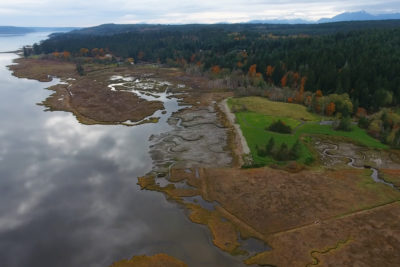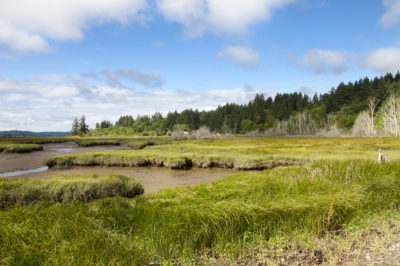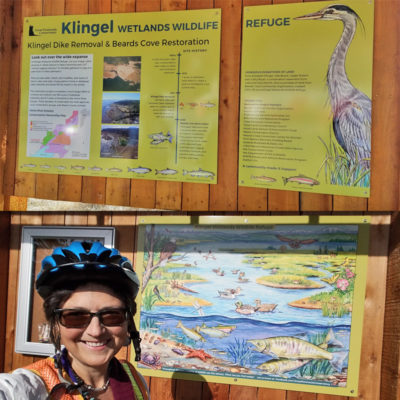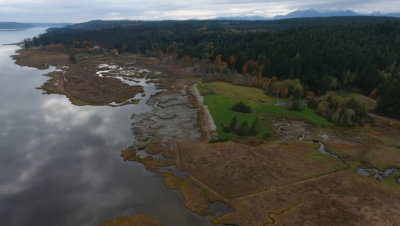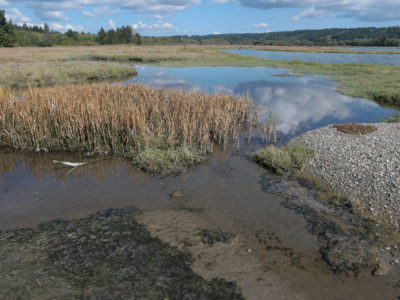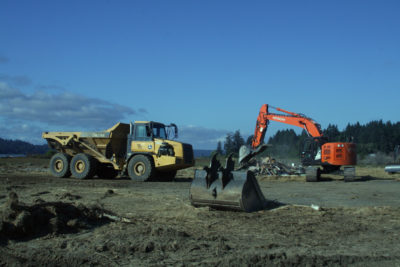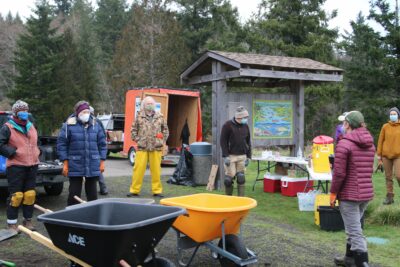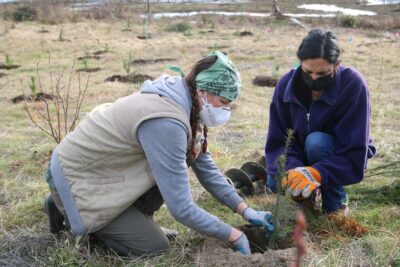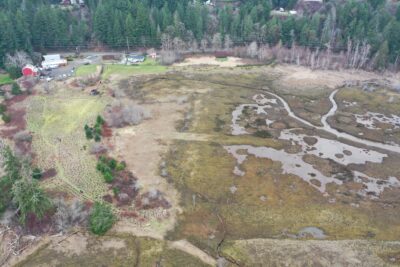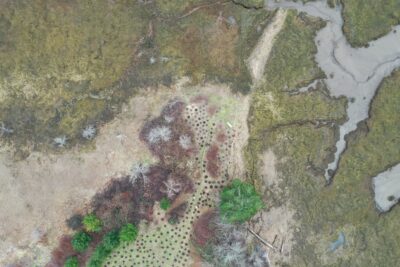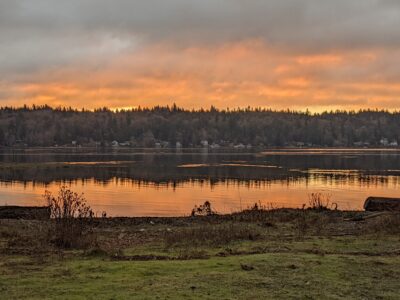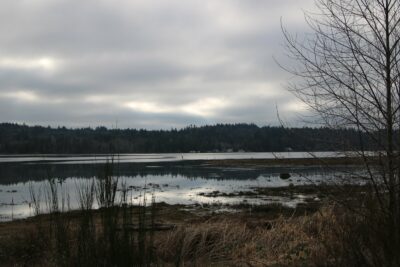Klingel-Bryan-Beard Wildlife Refuge
Restoration at Klingel-Bryan-Beard Wildlife Refuge protects the Union River estuary and provides vital habitat to threatened Hood Canal summer chum, Puget Sound Chinook, and winter steelhead. This restoration project completes a much larger, three-decade-long effort by state agencies, local conservation groups and Mason County schools that has now conserved over 650 acres and 5.5 miles of shoreline at the toe of Hood Canal.
Looking out over the wide expanse of Klingel-Bryan-Beard Wildlife Refuge you’ll see squiggly traces of tide channels and tracks of shorebirds, deer, and coyotes. It’s hard to imagine that here once grazed cattle to feed a thriving early 20th century logging industry or, more recently, that families gathered here to swim and play on land created by diking and filling salt marsh.
Project History
The Hood Canal once contained vast salt marshes, but over the last century its health and productivity have been greatly diminished by diking, draining, and bulk heading.
In the early 1950s
The area that is now the Klingel-Bryan-Beard Wildlife Refuge was diked to create pasture and hayfields, and in the 1970s seven acres were filled in to create a recreation site for the Beards Cove Community, resulting in the loss of critical habitat for salmon, ducks, shorebirds, and a host of other wildlife. Even after the land was no longer farmed, the dike continued to keep out the saltwater, and much of the former pastureland became a freshwater wetland rife with invasive plant species.
1985
Elizabeth Klingel generously donated her land to Great Peninsula Conservancy to protect and restore. Over the years subsequent land donations by Judge Robert and Cathy Bryan, to make the Jimmy Bryan Wildlife Refuge; Oda Beard; a conservation easement donation by Gary and Celia Parrott; and a purchase of land from Beards Cove Community Organization created GPC’s 95-acre Klingel-Bryan-Beard Wildlife Refuge. Protecting this land was a huge win for conservation, but Great Peninsula Conservancy’s work was just beginning.
2011
Great Peninsula Conservancy removed the old dike and allowed the tides of Hood Canal to mix with freshwater once again. As the land reverts to tidal saltmarsh, marine animals and salt-tolerant plants reclaim the area. The restored saltmarsh now provides prime habitat for immature salmon and cutthroat trout, as well as countless shellfish and other marine organisms. The USDA National Resources Conservation Service provided significant project funding and now holds a conservation easement on the restored land. Additional project funding was provided by Washington State Recreation and Conservation Office and Washington Department of Fish and Wildlife through the Salmon Recovery Program and Estuary and Salmon Restoration Program.
In 2017
Great Peninsula Conservancy completed a massive restoration project to remove 4,600 dump-truck loads of fill from Beards Cove, restore natural tide channels and shoreline contours, and plant native grasses, shrubs, and trees. Project funding was provided by Washington State Recreation and Conservation Office’s Salmon Recovery Program and the Environmental Protection Agency’s Marine and Nearshore Program.
This stewardship project has restored this saltmarsh to its former glory, and completes a much larger effort. Over three decades an amazing 650 acres and 5.5 miles of shoreline have been conserved here by Great Peninsula Conservancy and many partners.
In 2021-22
Great Peninsula Conservancy completed an invasive species control and native plant restoration project with the help of 225 volunteers. Following the removal of Scotch Broom and Himalayan Blackberry from approximately 7 acres of upland areas on the preserve in 2021, volunteers planted over 5,000 native species of trees and shrubs on the open land.
This project was accomplished in partnership with scientists from Western Washington University. Dr. Jenise Bauman and her MA student Chelsea Harris coordinated the planting of 1,000 of the trees to conduct an experiment on assisted migration. Read more about this project on GPC’s blog.
Accessibility
Trail Features: Natural surface trails.
Structures: Interpretive signage. Gate may be a potential barrier to access due to its narrow width.
Parking: Gravel parking lot.
Bathroom: No bathrooms.
Project Partners
Beards Cove Community Organization
Ducks Unlimited Washington
Engineering Services Associates, Inc.
EPA Marine and Nearshore Program
Hood Canal Coordinating Council
Hood Canal Salmon Enhancement Group
Mason Conservation District
Mission Creek Corrections Center for Women
Rose Foundation for Communities and the Environment
Sealevel Bulkhead Builders, Inc.
USDA Natural Resources Conservation Service
Washington Conservation Corp
Washington Department of Fish and Wildlife
Washington Department of Fish and Wildlife Estuary and Salmon Restoration Program
Washington State Recreation and Conservation Office
Zephyr’s, Inc.

